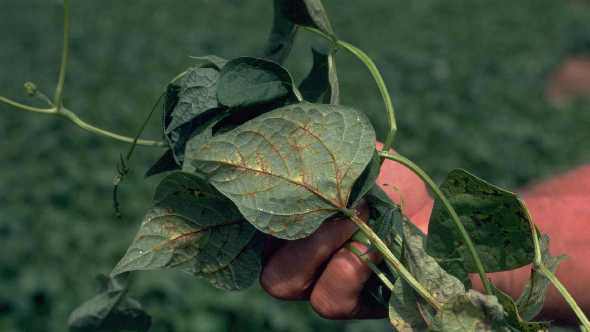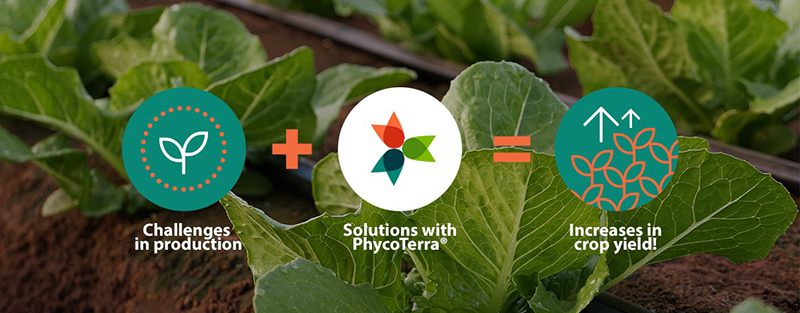Stop Tobacco Streak Virus From Taking Hold Of Your Vegetables
Crops Affected
In addition to beans, other known hosts of the virus include cowpea, cucurbits, sweet clover, tomato, and a number of weeds such as wild mustard and thistle.

Photo by Howard F. Schwartz
Identification
Bean red node, also known as tobacco streak virus (TSV), is an occasional problem of snap and specialty beans grown in South Florida. Bean red node is caused by a member of the genus Ilarvirus.
In beans, red node infection causes a reddish discoloration of nodes at the point of attachment of leaf petioles to stems. In severe cases, infected plants will flex or break at a discolored node. The veins and veinlets of infected leaves exhibit a red to reddish-brown streaking. Red to reddish-brown concentric rings form on pods, which become shriveled or puffy and do not produce seeds. Plants can be severely stunted and killed by the virus.
In 2014, researchers from the UF/IFAS Tropical Research and Education Center and the USDA-ARS Vegetable Laboratory using molecular technology identified a novel genotype of TSV infecting squash plants in Homestead. This is the first report of TSV infecting squash in Florida and the U.S.
The infected squash displayed an unusual mosaic disorder on leaves. Symptoms occurred primarily on top young leaves and included mosaic, leaf curling, yellowing, and stunting of plant tissues. Young leaves were usually small and distorted showing narrow and pointed “fern leaf” symptoms.
Tobacco streak is a widespread disease of tomato, but it generally does not cause major losses.
In tomato, downward curling of leaf blades of tomato infected with tobacco streak is common. Leaf veins become necrotic, which can lead to necrotic blotches, especially on young leaves. Fruit may develop necrotic ringspots. Necrotic streaks on young stems extend to flowers and leads to flower drop.
Survival And Spread
TSV is reported in more than 26 countries around the world and has a wide host range infecting more than 200 plant species. TSV is efficiently transmitted in the field by several species of thrips including western flower thrips (Frankliniella occidentalis) and onion thrips (Thrips tabaci). Seed transmission is reported to occur in beans, chickpeas, and weeds.
Management Methods
Control of TSV is difficult. Chemical controls have not been developed for red node. Thrips control is ineffective but maintaining insect control programs is advised even though controlling insect vectors alone will probably not provide sufficient control of TSV.
The primary controls for this disease are mostly cultural. It always is wise to use virus-free seed and to control weed hosts. No biological control strategies have been developed for the management of red node.
Good ditchbank weed management as well as growing beans in large tracts to minimize border- to field-area ratio are the most effective means of controlling this disease. Typically, this requires advanced planning. Once beans are already in the ground, there is little that can be done. So keep this in mind for next season.
Consult UF/IFAS recommendations for currently labeled insecticides for thrips control in Florida vegetables.










